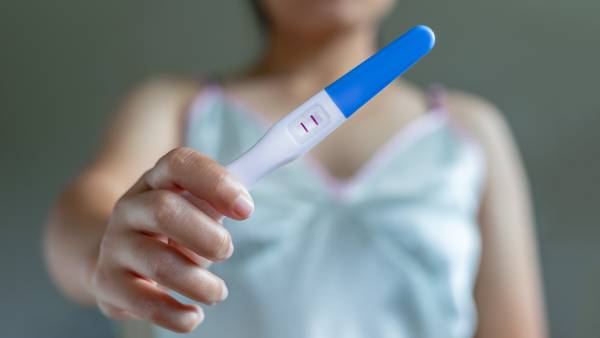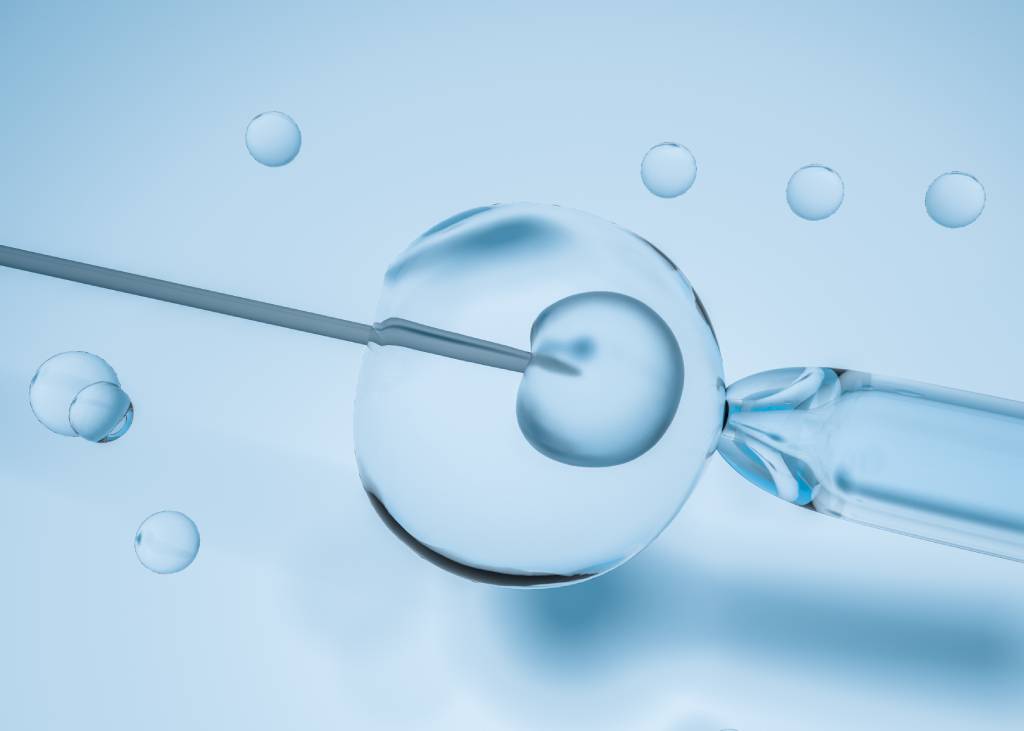Plastic surgery Health care - covered by insurance Beauty care – paid by the patient
Gynaecology Prenatal diagnosis
Medical genetics Urology Orthopaedics X-ray site Rehabilitation
Office hours Restaurant
Not sure? Contact us through our form HERE.
Infertility treatment
We provide comprehensive help with conceiving a child. We diagnose the causes of couple infertility and offer treatment of couple infertility.
contact us
Diagnostic methods
Our clients are initially thoroughly examined to determine the cause of the problem and then we can select the optimal treatment method. In some cases, it is very easy to detect the problem, however, in others, the procedure can be more complicated. One does not necessarily have to undergo all the following examinations.
Basic examination includes the sperm count test. It is also possible urological or genetical examination.
Gynaecological and ultrasonographic examination; Necessary hormonal examinations of blood; Hysteroscopy, laparoscopy, HyCoSy; Genetics examination; Immunological examination

Methods of infertility treatment
The doctor suggests the most appropriate treatment method to the clients based on the diagnostic examination findings. This is done in an effort to progress from less demanding to more complex methods.
This involves monitoring the development of the egg using an ultrasound examination and the subsequent administration of a drug that will ensure the release of the egg from the ovary. After that, unprotected intercourse 24-48 hours apart is recommended to allow fertilization to occur.
During a woman's ovulation period, the partner's sperm obtained by processing the ejaculate is introduced with a special catheter into the woman's uterus, where fertilization takes place. It is a quick and painless procedure that does not require anesthesia. After the procedure, the patient can immediately engage in normal activities without restrictions. In cases where it is not possible to use the partner's sperm, the sperm of an anonymous donor can be used.
Depending on the doctor's indication, this type of treatment is carried out either during the woman's natural cycle or with hormonal support.
Who is IUI (intrauterine insemination) intended for?
IUI is intended for couples who have been unable to conceive naturally for a long time despite a proven ovulation period. The different causes include impaired sperm quality, reduced permeability of the cervix, a milder form of endometriosis, or, for example, an immunological factor of infertility.
It is an alternative to in vitro fertilization (IVF) without hormonal stimulation of the woman when the goal is to obtain at least one spontaneously created embryo. We only monitor the natural growth of the follicle (egg) on the ovary. If it is of sufficient size, we perform a puncture - egg retrieval. The egg is fertilized with the sperm of the partner/donor and after several days of cultivation, the resulting embryo is introduced into the uterus.
Puncture is performed under brief anesthesia.
Who is the native cycle for?
The native cycle is intended for women who do not want to undergo hormonal stimulation for various reasons, for women who are no longer eligible for an IVF cycle covered by health insurance, or for women who do not respond well to stimulation.
Without hormonal stimulation, during which the egg maturation processes are precisely controlled, there is an increased risk that the egg will be extracted at the wrong time and therefore not be of suitable quality. During conventional hormonal stimulation, we typically obtain a larger number of eggs, and if some of them do not fertilize or the resulting embryo does not develop further, there is still a chance that we will get a quality embryo from the others for embryo transfer.
This is an alternative to the IVF cycle with so-called minimal stimulation, where we administer a lower than usual amount of stimulation drugs. The course of stimulation is gentle and well tolerated. This reduces the risk of hyperstimulation syndrome; however, we expect fewer growing follicles.
When is minimal stimulation employed?
Minimal stimulation is used for women who are at risk of ovarian hyperstimulation syndrome or if a woman is concerned about hormonal stimulation. This method can be used for women who suffer from polycystic ovary syndrome (PCOS).
During IVF, a woman's eggs are fertilized with the partner's/donor's sperm in laboratory conditions (in vitro). The eggs are collected after previous hormonal stimulation. After that, the eggs are fertilized with the sperm of the partner/donor and subsequently cultured in the laboratory. After several days of cultivation, the resulting embryo is inserted into the patient's uterus.
The egg retrieval is performed under short general anesthesia. The introduction of the embryo does not require anesthesia.
Who is the IVF (in vitro fertilization) method intended for?
IVF is intended for women who have been diagnosed with blocked fallopian tubes or inflammatory adhesions, women who have been diagnosed with endometriosis, couples with a severe male sterility factor, couples with an immunological factor of sterility, or couples who have been unable to conceive for several years and have not been able to find the cause of infertility.
If necessary, it is possible to use eggs or sperm from anonymous donors.
In this program, we offer in vitro fertilization (IVF) with donated sperm, in vitro fertilization (IVF) with donated eggs, and in vitro fertilization (IVF) with a donated embryo.
In vitro fertilization with donated sperm
Treatment using donated sperm is suitable for couples where the man’s spermiogram results show such serious changes that there is no choice but to use sperm from a donor, or the man has undergone sterilization and no sperm can be obtained by surgery, e.g. by the TESE method; or where the man suffers from prostate and testicular cancer and has no frozen sperm of his own, or the man suffers from other health problems, as indicated by the IVF specialist.
In vitro fertilization with donated eggs (DIVF)
The principle of this method is to synchronize the cycles of both the donor and the recipient. The egg donor undergoes ovarian stimulation while the recipient undergoes endometrial stimulation. A woman seeking treatment using donated eggs can choose a suitable donor based on phenotypic characteristics (eye color, hair color, height, weight). It is also possible to provide information about the donor’s blood type. For egg retrieval, the donor undergoes brief general anesthesia. The introduction of the embryo into the uterus of the recipient does not require anesthesia.
Who is DIVF suitable for?
Due to its high success rate, the egg donation program is a good treatment alternative for older women who have a limited ability to conceive using their own eggs. Additionally, donor egg treatment is suitable for women who have undergone oncological treatment, women with genetic disorders, or women who have repeated unsuccessful attempts at in vitro fertilization using their own eggs (IVF cycles).
In vitro fertilization (IVF) with a donated embryo
This type of treatment is used in cases where neither the man nor the woman has sufficient quality of their own reproductive cells. The couple is offered a suitable embryo from anonymous donors, which is then introduced into the uterus of the recipient.
Embryos that have been frozen can be thawed and used for a new transfer into the uterus.

Optional methods
A sperm cell is selected under a microscope based on its morphological characteristics and motility in this method. This sperm cell is then introduced into the egg via micromanipulation pipettes. This increases the probability of fertilisation of the egg compared to conventional IVF. ICSI indications in general are reduced spermiogram values. However, ICSI is currently the dominant method for in vitro fertilisation and has virtually completely replaced conventional in vitro fertilisation.
Prolonged embryo culture is the culture of embryos from the 8-cell stage to the blastocyst stage the embryo reaches by the 5th day of culture.
Prolonged culture mimics the course of natural pregnancy – in the first days after fertilisation, the embryo is transported using the ciliated epithelium of the fallopian tube to the uterine cavity, which is reached on the fifth or sixth day. Prolonged culture can be used as a method of selecting the embryo with the highest quality. Embryos in the blastocyst stage have a higher probability of implantation (nesting) in the lining of the uterine cavity.
We can freeze germ cells (oocytes, sperm) or embryos that are created by fertilising eggs with sperm. We freeze female and male gametes before therapeutic procedures associated with a risk of damage to the gametes due to drugs or radiation, in order to maintain fertility. It is also possible to have germ cells frozen for personal reasons, for example, due to the absence of a partner during the treatment of a woman. After the introduction of an embryo into the uterus during in vitro fertilisation, all remaining promising embryos are frozen. Embryos can be frozen at all stages of development. Most commonly, we freeze embryos at the blastocyst stage. The freezing method is a process called vitrification. These frozen cells and embryos can be stored for many years.
Other methods for a higher efficiency of treatment
PICSI is a modification of the ICSI method – mature sperm are selected based on hyaluronan binding prior to fertilisation. This process simulates the binding of the sperm cell to the egg, which occurs during spontaneous conception in the woman's body (in vivo). Immature sperm do not have this ability.
Assisted reproduction currently has to manage the steady increase in the age of couples wishing for their first offspring. This is largely reflected in the genetic quality of the embryos, and the prognosis for IVF success is usually lower than in younger couples. Such couples, and in general couples who repeatedly fail to conceive, suffer repeated miscarriages, where the male partner has abnormal spermiogram parameters, etc., may benefit from so-called preimplantation genetic screening. In this method, the genetic information of the embryo is determined before it is introduced into the uterus. The genetic examination itself is preceded by a sampling procedure reimbursed by health insurance.
In some cases, the infertility of the couple is caused by a specific genetic disease or chromosomal abnormality. In these cases, it is important to design suitable preimplantation genetic testing of embryos, which will allow the selection of only a healthy embryo for transfer, without this genetic disease.
The blastocyst must leave the protective envelope before the implantation (nesting) in the uterus. This natural process is called hatching. This natural mechanism may be disrupted in some cases. It is beneficial to perform assisted hatching before introducing the embryo into the uterus. Assisted hatching means artificial disruption of the outer envelope of the embryo. Current laser technology can gently thin the embryo's envelope, or completely disrupt it. It is performed in embryos with a stronger outer envelope (zona pellucida hardening).
EmbryoGlue is a tissue adhesive that imitates the environment in the uterus when the embryo is naturally settling. Simply put - EmbryoGlue helps to glue the fertilized egg to the uterine wall. EmbryoGlue contains hyaluronic acid, which creates a bond between the uterus and the embryo and literally "glues" them together. Its composition provides necessary substances for the growth of the embryo. EmbryoGlue demonstrably increases chances of getting pregnant.
One of the hidden causes of reduced male fertility is the damaged chromatin integrity of sperm (simply put, the genetic information contained in the sperm is damaged). At the time of fertilisation, the sperm carry genes into the egg which are necessary for the further development of the embryo. Damage to these genes significantly affects male reproduction by reducing the likelihood of egg fertilisation and increasing the likelihood of miscarriages.
Sanus CAR Jihlava provides examination of chromatin integrity using sperm chromatin structure assay (SCSA), which is the most accurate, globally recognised method with strong diagnostic and prognostic significance.


